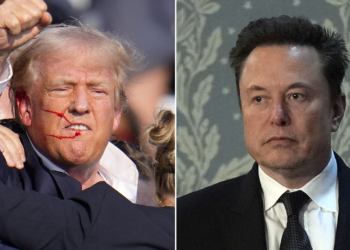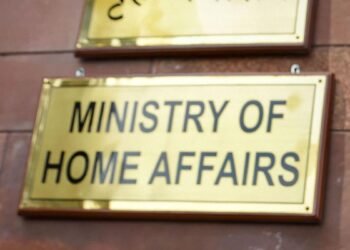May 10, 2025 – New Delhi/Islamabad
In a significant development, India and Pakistan have agreed to a “full and immediate ceasefire” following intense diplomatic intervention by the United States, as announced by U.S. President Donald Trump on his Truth Social platform on Saturday. The agreement comes after days of heightened military hostilities, including drone attacks, missile strikes, and artillery exchanges along the Line of Control (LoC) in Jammu and Kashmir, marking one of the most severe escalations between the two nuclear-armed neighbors in decades.
The latest round of conflict was triggered by a terrorist attack on April 22, 2025, in Pahalgam, Indian-administered Kashmir, which claimed the lives of 26 civilians, mostly tourists. India accused Pakistan of orchestrating the attack, a charge Islamabad vehemently denied. In retaliation, India launched Operation Sindoor on May 7, conducting precision airstrikes on alleged terrorist infrastructure across Pakistan and Pakistan-administered Kashmir. The operation targeted nine locations, which India claimed were militant headquarters responsible for attacks on its soil.
Pakistan responded with counterstrikes, including drone and missile attacks on Indian military installations across a wide swath of territory, from Leh to Sir Creek. The Indian Ministry of External Affairs reported 13 civilian deaths and 59 injuries due to Pakistan’s ceasefire violations along the LoC, particularly in Poonch district. Pakistan, meanwhile, claimed 36 fatalities and 57 injuries from Indian strikes, escalating fears of an all-out conflict.
👏👏👏👏👏👏👏👏👏👏👏👏Trump claims India and Pakistan agree to FULL AND IMMEDIATE CEASEFIRE
Achieved after long night of talks ‘mediated by US’ pic.twitter.com/7hmSBrdYjl
— Goddess (@GoddessEarthlin) May 10, 2025
The tit-for-tat attacks, involving advanced drones and heavy artillery, marked a dangerous new phase in the India-Pakistan rivalry. Experts warned of the potential for nuclear escalation, given the scale of the confrontation, which surpassed previous standoffs in 2016 and 2019.
U.S. Steps In
As the situation spiraled, the United States, historically a key mediator in India-Pakistan conflicts, took a proactive role. U.S. Secretary of State Marco Rubio engaged with Pakistan’s Army Chief General Asim Munir and Indian Foreign Minister S. Jaishankar, urging de-escalation. President Trump’s direct involvement culminated in a night of talks that led to the ceasefire agreement.
“After a long night of talks mediated by the United States, I am pleased to announce that India and Pakistan have agreed to a FULL AND IMMEDIATE CEASEFIRE,” Trump posted on Truth Social. While neither India nor Pakistan has officially commented on Trump’s announcement, sources indicate that both nations have begun scaling back military operations along the LoC.
The U.S. intervention contrasts with earlier statements from Vice President J.D. Vance, who described the conflict as “fundamentally none of our business” and emphasized a hands-off approach aligned with Trump’s “America First” policy. However, the risk of nuclear escalation and pressure from regional allies, including Gulf states like Saudi Arabia and Iran, likely prompted Washington to act.
Regional and Global Reactions
The ceasefire has been cautiously welcomed by the international community. Belarus, which had earlier called for an immediate halt to hostilities, reiterated its advocacy for peaceful negotiations. Iran, maintaining ties with both nations, offered to facilitate further de-escalation, while Gulf states have emerged as unexpected peace brokers, filling a diplomatic vacuum left by a less engaged U.S. in recent years.
On X, sentiments reflect a mix of relief and skepticism. Some users speculated that the ceasefire was pre-negotiated, with terms possibly including the restoration of the Indus Water Treaty and discussions on Kashmir’s status. Others, however, dismissed such claims as unverified, emphasizing the need for official confirmation from New Delhi and Islamabad.
A Fragile Truce
The ceasefire, while a step toward de-escalation, remains fragile. The underlying issues fueling the conflict—primarily the dispute over Kashmir—persist. Pakistan’s suspension of the 1972 Simla Agreement in April 2025, which redefined the LoC as a de facto border, has further complicated the situation, reverting the LoC to a contested ceasefire line.
Analysts warn that without addressing root causes, such as cross-border terrorism and differing claims over Kashmir, the truce may be short-lived. “This ceasefire is a bandage on a deep wound,” said Praveen Donthi, a senior analyst with the International Crisis Group. “Unless the U.S. or other mediators push for sustained dialogue, we’re likely to see another flare-up.”
The Road Ahead
For now, the ceasefire offers a respite to civilians caught in the crossfire, particularly in border regions like Poonch, Rajouri, and Uri, where blackouts and shelling have disrupted daily life. Both nations have signaled a desire to avoid further escalation, but the absence of a clear framework for
As India and Pakistan pull back from the brink, the international community, led by the U.S. and supported by regional powers, must seize this opportunity to foster lasting peace in South Asia. The stakes—given the nuclear capabilities of both nations—could not be higher.
Foreign Secretary Vikram Misri warned that Pakistan’s continued provocations, including drone attacks, constitute escalation and will be met with a “very firm response.” India













